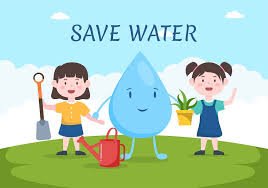
Water Save

Introduction to Water Conservation
Water conservation has become a critical issue today, given the increasing pressures on our global water resources. The global water crisis highlights the urgency of adopting sustainable practices in both school and home environments. It is essential to recognize that water is a finite resource, and its misuse can lead to severe environmental consequences. Not only does this affect our immediate surroundings, but it also has far-reaching impacts on ecosystems and communities worldwide.
One of the primary reasons for water conservation is the need to address the environmental impact of water waste. When water is wasted, it leads to the depletion of natural water sources, affecting rivers, lakes, and underground aquifers. This depletion can result in the loss of habitats for various species, disrupting the balance of ecosystems. Additionally, the energy used to pump, treat, and distribute water contributes to carbon emissions, further exacerbating climate change.
In educational institutions, promoting water conservation can instill lifelong habits in students. Schools serve as a microcosm where sustainable practices can be taught and implemented effectively. By integrating water-saving measures in daily routines, students learn the value of this precious resource, preparing them to become responsible citizens who will carry these practices into their homes and communities.
At home, conserving water has numerous benefits, including reduced utility bills and the preservation of water supplies for future use. Simple actions, such as fixing leaks, using water-efficient appliances, and adopting mindful water use practices, can significantly lower household water consumption. This not only alleviates the stress on local water supplies but also ensures that there is enough water to meet the needs of future generations.
By understanding the importance of water conservation and implementing practical strategies, we can collectively make a difference. Ensuring the sustainability of our water resources is crucial for maintaining the health of our planet and the well-being of all its inhabitants.
Simple Daily Habits to Conserve Water
Implementing simple daily habits can significantly contribute to water conservation both at school and at home. One of the easiest ways to save water is by turning off the tap while brushing teeth. This small action can save a considerable amount of water over time. Similarly, taking shorter showers is another effective habit. Reducing shower time by even a few minutes can lead to substantial water savings. Encourage the use of a timer to help keep track of shower duration, making it easier to stick to a time limit.
Another practical habit is only running the washing machine and dishwasher with full loads. These appliances consume a large amount of water, and running them with partial loads wastes both water and energy. By waiting until there is a full load, you optimize the efficiency of water and energy usage. Additionally, fixing leaks promptly is crucial. A dripping faucet or a running toilet might seem like a minor issue, but over time, these leaks can waste a significant amount of water. Regularly checking for and repairing leaks can prevent unnecessary water loss.
The cumulative impact of these small changes is substantial. Each individual action may seem minor on its own, but when practiced consistently, these habits collectively contribute to significant water conservation. Schools can promote these habits through educational programs and visual reminders, while families can encourage and model these practices at home. By fostering a culture of mindful water usage, we can ensure that our daily routines contribute to a sustainable future.
Water-Saving Tips for the Kitchen
Conserving water in the kitchen is both practical and straightforward, offering multiple opportunities to minimize water waste. One effective strategy is to use a bowl of water to wash fruits and vegetables, rather than letting the tap run continuously. This simple change can save several gallons of water each time you prepare produce. Additionally, the water collected in the bowl can be repurposed for watering household plants, thus maximizing its utility.
Another impactful method involves reusing cooking water. For example, water used to boil pasta or steam vegetables can be cooled and used for plants, as it often contains beneficial nutrients that can promote plant growth. This approach not only conserves water but also contributes to a healthier garden or indoor plants.
Installing water-saving devices, such as faucet aerators, is another practical solution. Aerators reduce water flow by mixing air with water, thereby decreasing the amount of water used without compromising water pressure. These devices are inexpensive, easy to install, and can significantly cut down on water consumption.
In addition to these strategies, it’s important to regularly check for leaks in kitchen faucets and repair them promptly. Even small drips can lead to significant water loss over time. Implementing these water-saving tips in the kitchen can substantially reduce water usage, contributing to both environmental conservation and cost savings.
Efficient Bathroom Water Use
Water conservation in the bathroom is crucial due to the high volume of water used daily for various activities. One effective method to save water is by installing low-flow showerheads. These fixtures are designed to reduce water flow without compromising on water pressure, thereby conserving water with every shower. Additionally, dual-flush toilets offer a significant reduction in water usage. They provide two flushing options, allowing users to select a lower volume of water for liquid waste and a higher volume for solid waste.
Another simple yet impactful practice is taking shorter showers. Limiting shower time to five minutes can save a considerable amount of water. Moreover, turning off the tap while lathering soap, shampooing, or shaving can prevent unnecessary water wastage. This small change in daily habits can lead to substantial water conservation over time.
It is also important to regularly check for leaks in toilets and faucets. Even a small, unnoticed leak can lead to a significant amount of wasted water. A common method to check for toilet leaks is to add a few drops of food coloring to the toilet tank. If the color appears in the bowl without flushing, it indicates a leak. In the case of faucets, listening for drips and visually inspecting for water around the base can help identify leaks early.
By implementing these water-saving techniques, such as installing low-flow showerheads and dual-flush toilets, taking shorter showers, turning off the tap while lathering, and checking for leaks, individuals can effectively reduce water consumption in the bathroom. These practices not only contribute to conservation efforts but also result in lower water bills, making them beneficial both environmentally and economically.
Outdoor Water Conservation Techniques
Outdoor water conservation is a crucial aspect of reducing overall water usage. One effective strategy is incorporating drought-resistant plants into your garden. These plants are adapted to thrive in low-water conditions, thereby reducing the need for frequent watering. Examples include succulents, lavender, and native grasses, which not only conserve water but also add aesthetic value to your landscape.
Mulching garden beds is another practical technique. A layer of mulch helps retain soil moisture, thereby reducing the need for additional watering. It also suppresses weed growth, which can compete with your plants for water. Organic mulches like wood chips, straw, and compost can improve soil health over time, making them a sustainable choice.
Timing is also key in outdoor water conservation. Watering plants early in the morning or late in the evening minimizes water loss due to evaporation. During these cooler parts of the day, water can penetrate the soil more efficiently, reaching the plant roots where it is needed most. Using a soaker hose or drip irrigation system can further enhance water efficiency by delivering water directly to the base of the plants.
Collecting and reusing rainwater is another effective method. Installing rain barrels can capture runoff from roofs, which can then be used to water gardens and lawns. This not only conserves potable water but also reduces the strain on municipal water systems during heavy rainfall. Additionally, using rainwater is beneficial for plants as it is free from chemicals commonly found in tap water.
Implementing these outdoor water conservation techniques can significantly reduce water usage, contributing to a more sustainable environment. By choosing drought-resistant plants, mulching garden beds, optimizing watering times, and using rain barrels, individuals can make a substantial impact on water conservation efforts.
Water-Saving Practices in Schools
Implementing water-saving measures in schools is crucial for fostering a culture of conservation among students. One of the most effective methods is installing water-efficient fixtures. Schools can replace traditional faucets, showerheads, and toilets with low-flow alternatives, significantly reducing water consumption. Additionally, installing sensor-activated taps and automatic flush systems can prevent unnecessary water wastage.
Educating students about the importance of water conservation is equally vital. Schools can incorporate water conservation topics into the curriculum, organizing workshops, and inviting experts to speak on the subject. By fostering an understanding of the value of water, students are more likely to adopt conservation practices both at school and at home.
Setting up a water monitoring system is another effective strategy. Schools can install water meters to track usage in different areas, identifying potential leaks or excessive use. This data can be used to implement targeted water-saving measures, such as fixing leaks promptly and adjusting irrigation schedules for school gardens.
Creating a water-saving culture through school-wide initiatives and competitions can also drive conservation efforts. Schools can host water-saving contests, encouraging students and staff to come up with innovative ways to reduce water usage. Recognizing and rewarding these efforts can motivate the entire school community to participate actively in water conservation.
By adopting these water-saving practices, schools not only reduce their environmental footprint but also educate the next generation about the importance of preserving this vital resource. Through a combination of infrastructure improvements, education, monitoring, and community engagement, schools can lead the way in promoting sustainable water use.
Innovative Technologies for Water Conservation
In the quest to conserve water, modern technologies have emerged as pivotal tools. Smart irrigation systems, for example, utilize sensors and weather data to optimize watering schedules, significantly reducing water wastage. These systems are ideal for school playing fields and home gardens alike, ensuring that plants receive the precise amount of water they need without excess.
Water-efficient appliances, such as low-flow toilets, showerheads, and washing machines, also contribute substantially to water conservation efforts. These devices are designed to perform their functions using minimal water, making them suitable for both residential and educational settings. Schools can integrate these appliances in restrooms and kitchens to achieve notable water savings.
Greywater recycling systems represent another innovative approach to water conservation. These systems collect and treat wastewater from sinks, showers, and laundry, allowing it to be reused for purposes such as irrigation or toilet flushing. Implementing greywater recycling in schools and homes can drastically reduce the demand for fresh water, fostering a more sustainable usage pattern.
Leak detection devices are crucial in identifying and addressing water wastage. These devices monitor plumbing systems for leaks and alert users to potential issues before they escalate. By integrating leak detection technology, both schools and households can promptly address leaks, preventing significant water loss and costly damage.
Incorporating these advanced technologies can lead to significant water savings and foster a culture of conservation. By utilizing smart irrigation systems, water-efficient appliances, greywater recycling, and leak detection devices, both homes and schools can play a crucial role in preserving this precious resource. Embracing these innovations not only contributes to water conservation but also sets a responsible example for future generations.
Community Involvement and Education
Community involvement plays a crucial role in fostering water conservation efforts. Engaging the community ensures that water-saving practices are adopted on a broader scale, thus amplifying their impact. Schools and families, as integral parts of the community, hold significant potential in spreading awareness and encouraging responsible water use.
One effective approach is to initiate community projects focused on water conservation. These can include organizing local clean-up events, creating community gardens that utilize rainwater harvesting systems, or setting up water-saving challenges. Such projects not only engage community members but also provide practical demonstrations of efficient water use.
Educational programs are vital in promoting water-saving practices. Schools can integrate water conservation topics into their curriculum, offering students hands-on activities like water audits, which help them understand their water footprint. Additionally, hosting workshops or seminars with experts can impart valuable knowledge to both students and adults about the importance of conserving water.
Partnerships with local organizations can further bolster community efforts. Collaborating with environmental groups, local businesses, and government bodies can provide resources and support for larger initiatives. For instance, local businesses can sponsor water-saving devices for schools and homes, while government agencies can offer grants for community-led conservation projects.
Families also play a pivotal role in water conservation. Parents can lead by example, practicing and teaching their children about responsible water use at home. Simple actions like fixing leaks, using water-efficient appliances, and adopting water-saving habits can significantly reduce household water consumption. Encouraging children to participate in community projects and educational programs reinforces these practices and extends their impact beyond the household.
By fostering a culture of water conservation through community involvement and education, schools and families can significantly contribute to sustainable water use. Together, these efforts can create a ripple effect, inspiring others to adopt water-saving practices and ultimately leading to a more water-conscious society.





